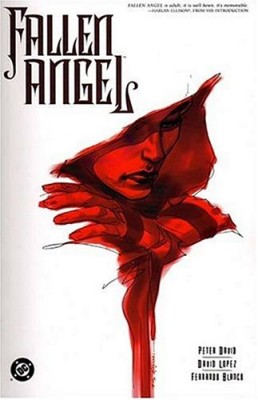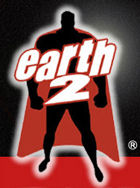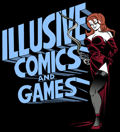It’s
not just about surprising the reader with an interesting
concept, but more about writing something that the reader
is not only not expecting, but leaving a reader asking “What
the hell just happened?” so that going back and re-reading
the comic he just finished seems invariably necessary. Being
pleasantly confused after reading a comic is a state that
few writers can coerce the reader into achieving, but one
such writer is Peter David.
David,
maybe best known for his work on The Incredible Hulk,
has created a character (as I wouldn’t go so far as
to call her a “heroine”) that somehow manages
to be highly rich in personality and wit, and at the same
time be a complete mystery to the reader. That character
is Lee from DC’s Fallen Angel.
Lee,
a woman of fiery colored hair and temperament, has set herself
up in the city of Bete Noir as a court of last resort for
those willing to meet her demands. In a city devoid of police
and run in a semi-illegal state by the Magistrate of Bete
Noir, Doctor Juris, she helps those in need. And “help”
by her definition can mean anything from salvation to damnation.
The
way that David plays with this character is quite interesting.
Lee never changes in emotional tone throughout the entire
book, except in slight instances of anger. We never see
her enjoy something and never see her “soften”
expressively, helped by the fact that artist David Lopez
and inker Fernando Blanco often craft visuals where all,
half, or some of Lee’s face is hidden from the reader.
The reader is never treated to a scene of emotional break-down
or overreaction from Lee. It’s almost as if she operates
in a permanent state of shock, able to function and yet
unfeeling in the execution.
Normally,
this would be a sign of bad writing or lax character building,
but the fact that Lee clearly has some type of “mission”
or purpose in doing the things she does, being an avenging
or revenging angel as it were, makes me assume that the
character is motivated in some fashion. David does not allow
us the slightest glimpse into what drives Lee, but gives
the impression that something most definitely does.
Another
way that David clouds the reader’s perception of Lee
comes through her interactions with the ensemble cast of
Bete Noirians. Her barely existent friendship with Dolf
the bartender, her odd choice in romantic collusion, her
antagonistic hatred and violent information pumping of the
Magistrate’s chief examiner Slade (who looks like
the Moroccan version of Steve Buscemi): these relationships
all highlight her otherness in respect to the story, which
is already spot-lit by the fact that she has better than
average strength, some type of enhanced durability, and
what one character calls “freaky mind powers.”
David never defines, at least in this first volume, what
powers Lee possesses, which is yet another thing we do not
know about the character.
All
of these little questions about the character should scream
“incomplete character development” to any comic
reader, but for some reason Lee never appears incomplete,
just hidden from the reader. The enticement of reading Fallen
Angel is that we slowly uncover small pieces of its
main character.
The
artwork by Lopez and Blanco is good: Blanco’s deft
touch with the inks provides the film noir feel the book
and the fictional city it’s set in require, complimenting
Lopez’s pencil work rather well. Lopez’s style
looks like a cross between the grotesqueness of Steve Dillon’s
work from Preacher and Darwyn Cooke’s nostalgic
pop-art style from DC: The New Frontier, and works
rather well for the story. Nathan Eyring further adds to
the piece with some excellent coloring, making night scenes
as colorful as daylight though muted slightly, much in the
style of Jeremy Cox. Lopez’s character design for
Lee, as well as the rest of the cast, show a willingness
to avoid superheroics and derivations thereof, presenting
a much more modern and metropolitan look than you might
see on a regular-universe DC book, but might find in a Wildstorm
title like 21 Down or Sleeper.
It’s
an interesting read, and an even more interesting re-read.
The $12.95 it costs will get you the first six issues of
the monthly, an introduction by SciFi legend Harlan Ellison,
and a cover gallery of covers by Brian Stelfreeze, which
are an absolute pleasure to look at (they’re so well
illustrated, I’m shocked I haven’t heard his
name before). Go out and buy this, at least to see if the
Fallen Angel has any wings or not.
And
bad puns mean it’s time to go. Later, Fanpeople.






